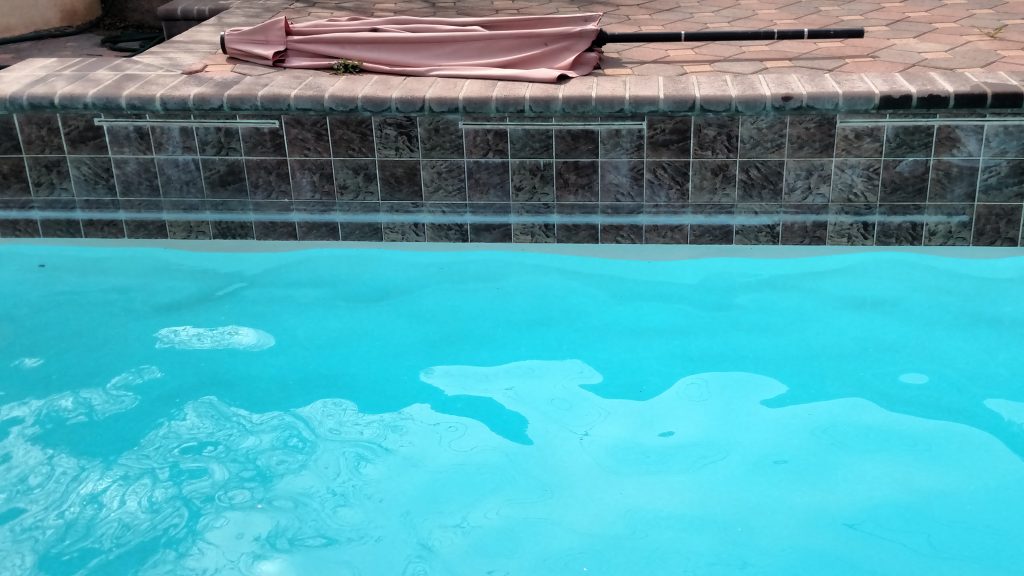Calcium is good for your body. But when it comes to your pool, that’s a whole different story.
In case you don’t know what that story is, this is it: Not good for your pool. So, what do you do in a situation where your pool is overrun with deposits of calcium (also known as limescale)?
They’re whitish and look rather unsightly on your pool tiles. They could even be dangerous for your body when you swim in the water.
If lime develops in your pool, hire pool maintenance professionals to inspect and clean up debris from its surfaces. Most pool cleaning services make a diagnosis for the localization, as well as the elimination of limescale.
If you want to do it yourself, read the rest of the article.

Why is having lime in your swimming pool a problem?
If pool owners hunt limestone like this, it’s not for nothing! Having excess lime in your swimming pool can indeed be the cause of various problems.
First of all, at the level of the interior of the basin. Because the more our pool is loaded with limestone, the more “chance” we have of seeing it build up from the inside.
And this as well at the level of the waterline as at the level of the walls and the bottom (especially if one has opted for a swimming pool liner as a coating). And a scaled pool is a pool whose water will be cloudy, and whose walls will be covered with gray or whitish deposits.
Stains which, besides being unsightly, will promote the appearance of ‘impurities and algae development. Without forgetting the possible inconvenience for swimmers: possible irritation of the skin and eyes.
But that’s not all: having too much lime can also be dangerous for the filtration system of the swimming pool. Indeed, when there is too much lime in our water, it will simply build up scale and prevent the proper functioning of the swimming pool filter.

So how do you know if your pool contains limestone?
Look for white or light gray spots on the sides and bottom of the pool, as well as the edges of the pool deck. Limestone forms scaly spots or streaks when the pH of the pool water and the calcium levels in the water are out of balance.
Although this build-up of lime can be removed, it can be difficult to do so. This article provides homeowners with tips that any pool maintenance company wouldn’t want you to know to remove lime deposits from the pool walls and prevent their return.
Removing Calcium Carbonate
If your pool contains calcium carbonate, removing it is easy, but takes time.
You can use a rough but harmless object for tiles such as a wet pumice stone or an eraser to flake off deposits.
You can also get calcium descaling treatment solutions from a pool service company or a pool supply store. Follow the product instructions to avoid damaging the pool water or injuring yourself.
Removal of Calcium Silicate
Calcium silicate is incredibly difficult to remove on your own. You can try using a pumice stone, but it will take a ton of elbow grease and time to complete the process successfully.
If you have a vinyl or fiberglass pool, this will not work at all. Even some descaling treatments can take months to break down the lasting calcium silicate.
You will probably need to hire pool maintenance professionals to remove lime build-up if you cannot do it yourself. They can also adjust the quality of your pool water, including pH and calcium levels, to prevent future buildup.

Remove limestone with a blowtorch and a polishing machine
If you have emptied your pool to clean it and you notice traces of lime, there are two methods that can get rid of this debris. These methods are effective but can take a long time depending on the size of your pool.
To remove the lime that is in the walls of your pool, just use a blowtorch to make the tartar less robust and then rub it with a wire brush. With the effect of heat, the tartar will be easily removed.
If you have limestone at the bottom of the pool, simply clean the pool thoroughly with a vacuum cleaner, then sand it with sanding and polishing machine.
Once descaling and polishing are finished, rinse your pool with a Kärcher to remove debris. Then evacuate your pool, let it dry, and fill it again if you want to reuse it.
If you do not want to fill it immediately, choose a tarpaulin or a protective cover. Your pool will therefore remain intact and ready to be filled at any time you wish.



